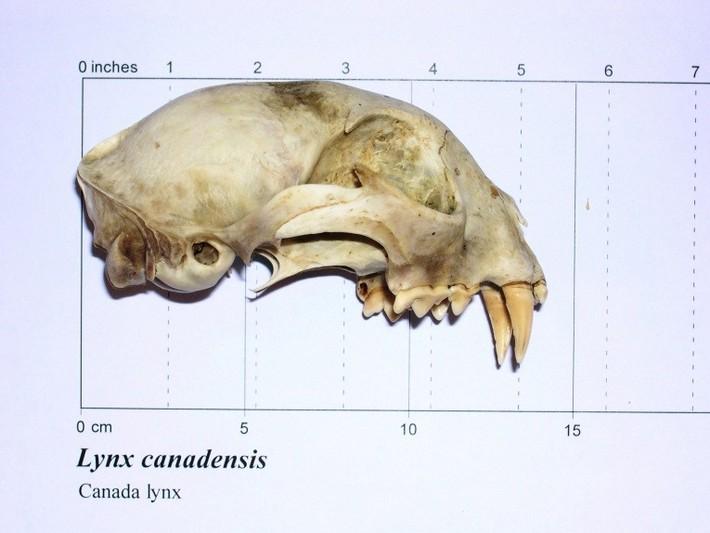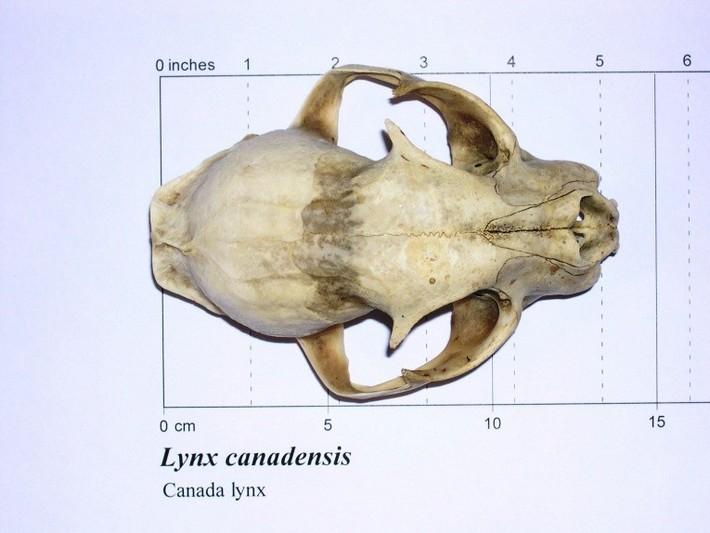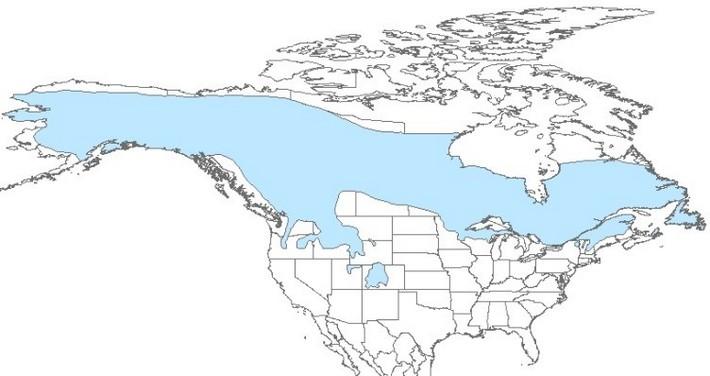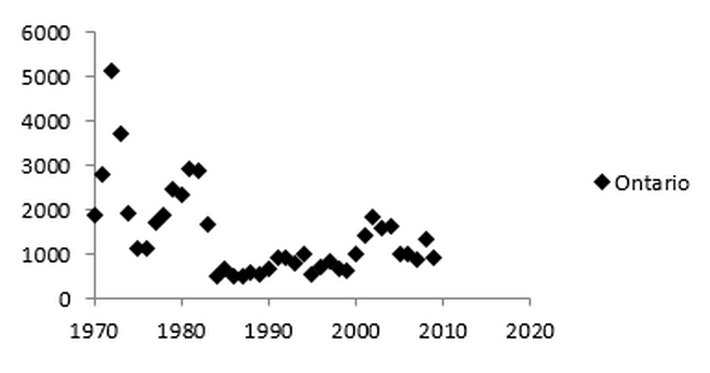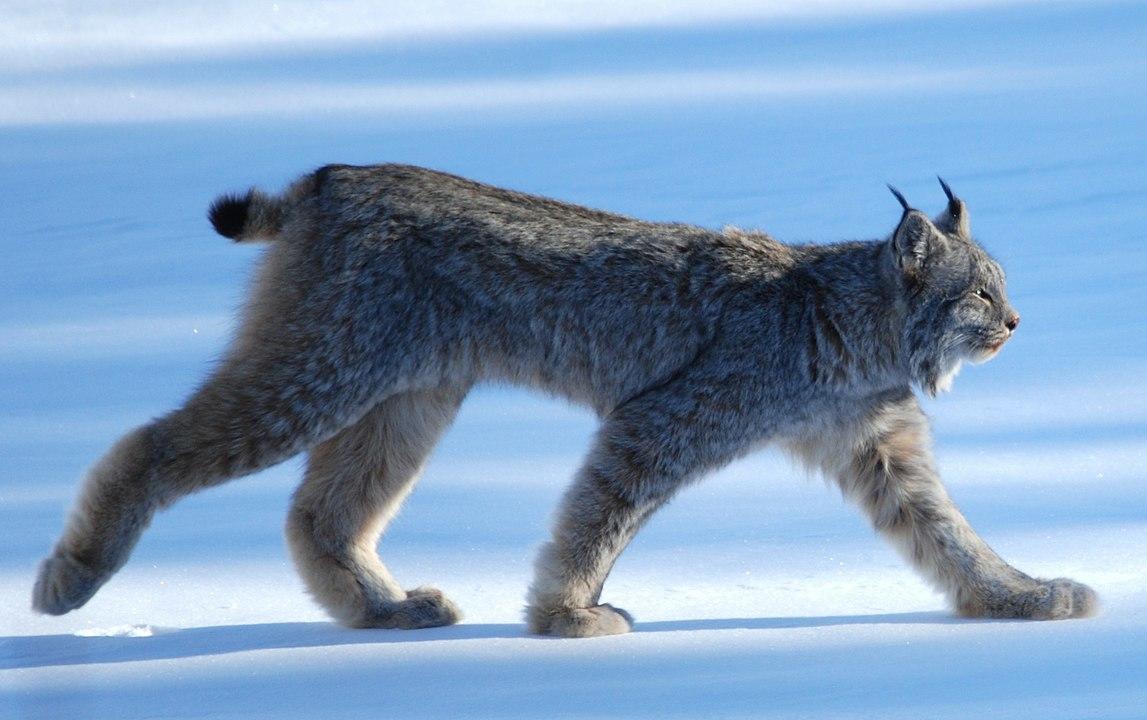
Description
Lynx are medium-sized carnivores in the cat family (Felidae). The major identification challenge is distinguishing lynx from bobcats.
Tail: A lynx’s tail has a black tip all around, with the appearance of being dipped in a bottle of ink. A bobcat’s tail is striped with black bands towards the end and has a black tip. Ears: Lynx have longer ear tufts than bobcats. Feet: Lynx have much larger feet than bobcats.
Size: Lynx are larger than bobcats.
Size
Measurements from Minnesota are from Hazard (1982) and from the Eastern United States are from Hamilton and Whitaker (1998).
Total length ranged from 34.4” to 39.4” (875-1,000 mm) in Minnesota. Female total length ranged from 30.1” to 38” (765-965 mm) and male total length ranged from 30.7” to 41.9” (780-1,065 mm) in the Eastern United States. Tail length ranged from 3.9” to 4.7” (100-120 mm) in Minnesota. Female tail length ranged from 3.0” to 4.8” (76-122 mm) and male tail length ranged from 3.0” to 5.4” (75-138 mm) in the Eastern United States. Body weight ranged from 16.1 lb to 35.1 lb (7.3-15.9 kg) in Minnesota. Female body weight ranged from 11.2 lb to 25.6 lb (5.1-11.6 kg) and male body weight ranged from 14.8 lb to 37.9 lb (6.7-17.2 kg) in the Eastern United States.
Males are typically larger than females.
Distribution & Status
Lynx are found in northern forested regions of the U.S. and Canada, particularly younger forests with snowshoe hare in Alaska and Canada (Moen et al., 2014). Lynx are classified as a furbearer in Ontario, and threatened in the Lower 48 under the Endangered Species Act. Populations are secure in Ontario, critically imperiled in Michigan, and not ranked in Minnesota or Wisconsin.
Worldwide, Lynx canadensis is restricted to northern North American. Closely related Lynx lynx is found across northern Europe and Asia in forest and steppe habitat.
Lynx have an IUCN rank of Least Concern, IUCN information.
Incidence in Minnesota
Lynx have been protected in Minnesota since 1984. In 2000, the U.S. Fish and Wildlife Service classified the lynx as a federally threatened species, USFWS information.
In Minnesota, lynx have primarily been detected in northeast Minnesota, sighting information.
Hunting and trapping are regulated by the Minnesota Department of Natural Resources, regulations.
Population Trends
To help assess population trends, we can look at regional furbearer harvest data, methods.
In Ontario, harvest was highest in the 1970s and early 1980s. After low harvest in the 1980s and 1990s, harvests have rebounded in the 2000s, although still lower than peak production in the 1970s.
Life History
Lynx primarily feed on snowshoe hare (Lepus americanus), resulting in population cycles as hare population numbers alternatively boom and bust (Krebs et al., 2001; Moen et al., 2004). Cycles may be dampened in regions where lynx are less numerous. Lynx reach highest abundance in boreal forest. Lynx mate in January/February, with 1-4 young born in March/April after a 62 day gestation. Lynx dens are located in hollow logs, stumps, or clumps of timber (Chapman and Feldhamer, 1982). Young eyes open at 10 days, and coats remain spotted for several months. Yearlings sometimes remain with their mother, while females mature sexually at 2-3 years old. Lynx are adept at tree-climbing, swimming, and walking on snow, as their feet act like snowshoes. Deep snow helps lynx hunting success rates. Deep snow also inhibits bobcat hunting success, a competitor, where ranges overlap. Lynx are uncommon prey for raptors and larger mammal carnivores.
Contacts with Humans
Lynx are most abundant in sparsely populated locations, so pose little threat to agricultural operations. Lynx fur has some value as a marketable commodity.
